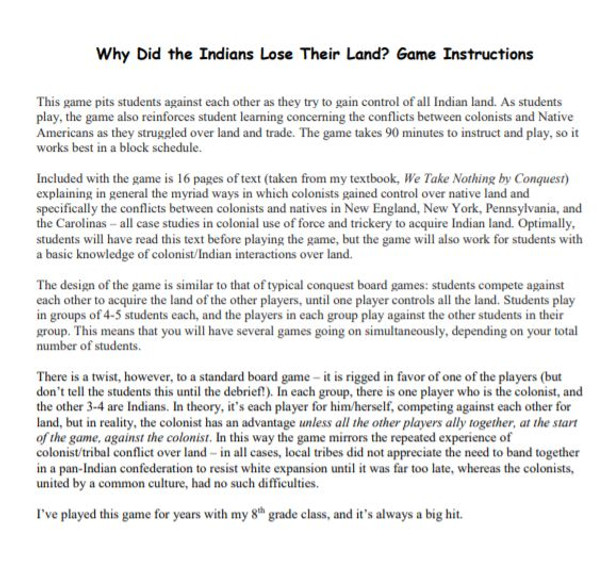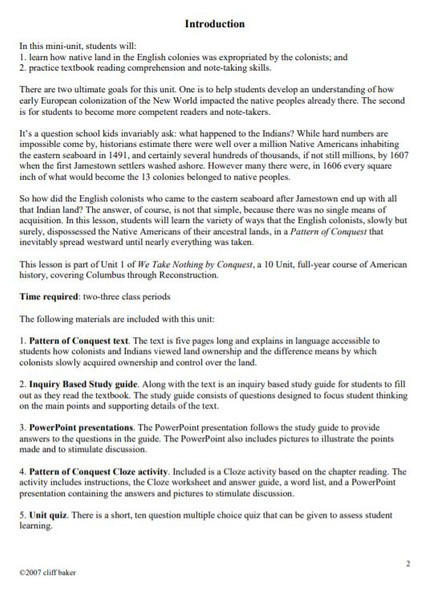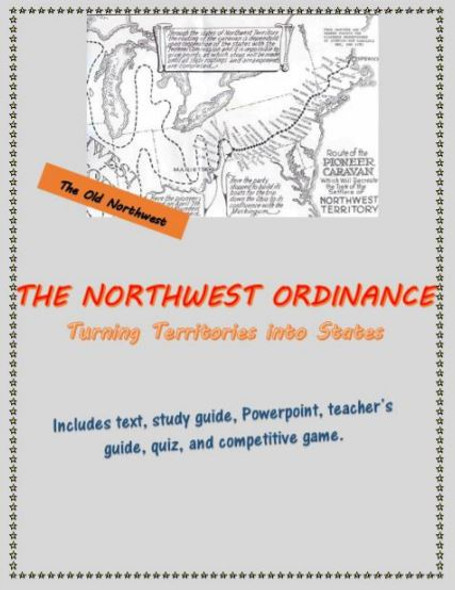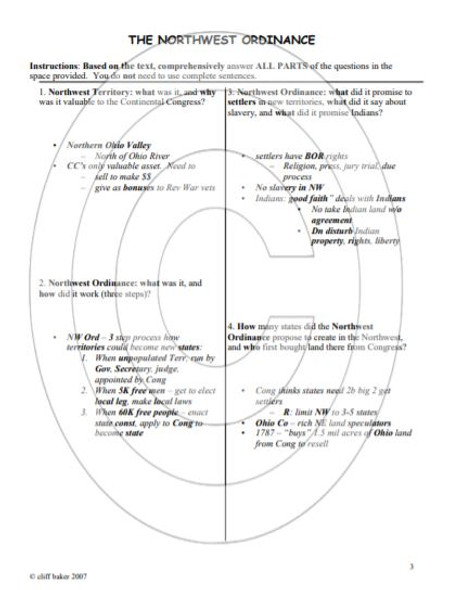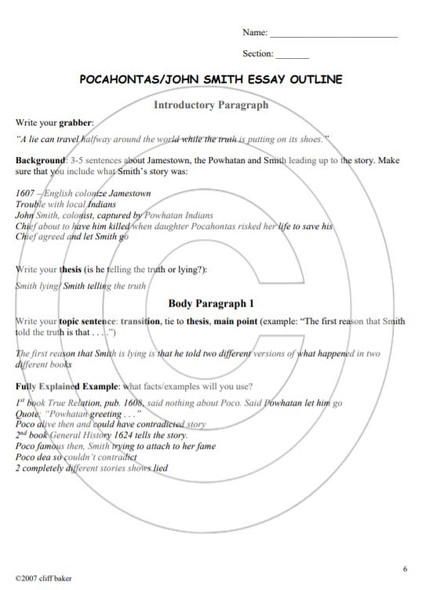Why Did the Indians Lose Their Land? strategy game including text
- Bulk Pricing:
- Buy in bulk and save
- Contributor:
- Cliff Baker - Ye Olde History Emporium
- Grade Level:
- 7-12
- Product Type:
- Strategy game
- File Type:
- Doc
- Pages:
- Game
- Answer Key:
- N/A
Description
“good resource”
It’s a question school kids invariably ask when they study the 13 colonies: what happened to the Indians? While hard numbers are impossible come by, historians estimate there were well over a million Native Americans inhabiting the eastern seaboard in 1491, and certainly several hundreds of thousands, if not still millions, by 1607 when the first Jamestown settlers washed ashore. However many there were, in 1606 every square inch of what would become the 13 colonies belonged to native peoples. Eventually, none of it would.
So how did the English colonists who came to the eastern seaboard after Jamestown end up with all that Indian land? The answer, of course, is not that simple, because there was no single means of acquisition. There were a variety of ways that the English colonists, slowly but surely, dispossessed the Native Americans of their ancestral lands, in a Pattern of Conquest that inevitably spread westward until nearly everything was taken. One constant, however, did appear in nearly all instances: different Indian tribes were never able to put aside their differences and unite in a pan-Indian alliance against white expansion until it was too late.
This highly engaging, strategic board game is designed to entertain and teach students about the colonial and native struggle over control of Indian land, a struggle seemingly always tilted in the colonists’ favor. Students play against each other in small groups of 4-5 students, trying to gain control of every other player’s land. In each group, one player is the colony, while the others are Indian tribes. Students use shifting alliances, trade, and outright war to gain the upper hand against each other. Each player’s strategy is different: while the colonist uses his/her advantage as a desired trading partner to divide and conquer the tribes, the Indians need to realize early on that unless they unite as one against the colonist, they will eventually lose in a battle of attrition.
The game requires about 20 minutes for set up and instruction, so works best with an 80-90 minute block. Students love battling with each other for land, and seem to particularly enjoy stabbing each other in the back with broken alliances. Be prepared for noise!
Materials include:
* 16 pages of informative text (3 chapters from my textbook“We Take Nothing by Conquest”)
* teacher instructions
* player instruction cards
* play cards
* ammo cards
* warrior/land cards
The game requires about 45-60 minutes of one-time set up (copying and cutting out playing cards for each group). Materials are provided as word documents and PDFs in one zip file. I’ve played this game in my 8th grade class for years, and it never fails to be a big hit.
Created by Cliff Baker - Visit Ye Olde History Emporium

